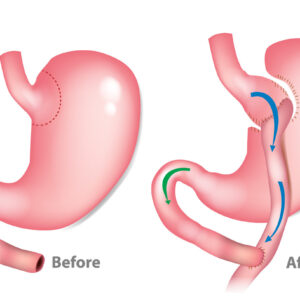Description
Familiarity with Treatment
Distraction osteogenesis (DO) is a surgical technique used in oral and maxillofacial surgery to generate new bone following a corticotomy or an osteotomy and gradual distraction. The method is based on the tension-stress principle proposed by Ilizarov. The gradual bone distraction creates mechanical stimulation, inducing biological responses and bone regeneration. It is a well-established technique for bone and soft tissue formation in moderate to severe bone deficiency cases, both in the mandible, maxilla, and midface.
Procedure
The procedure involves cutting and slowly separating bone, allowing the bone healing process to fill in the gap. This is accomplished by a cascade of biological processes, including differentiation of pluripotential cells, angiogenesis, osteogenesis, and bone mineralization. In facial bones, the method has been proven to be predictable in animal studies with the generation of new bone and has been used in clinical practice.
Who is it Suitable for?
Distraction osteogenesis is suitable for individuals with moderate to severe bone deficiency cases in the mandible, maxilla, and midface. It is particularly useful for addressing craniofacial and dentofacial anomalies, and it holds great potential for various osseous defects encountered within the craniofacial skeleton.
Who is it Not Suitable for?
Distraction osteogenesis may not be suitable for individuals with certain medical conditions or those who are not in good overall health. Careful preoperative planning and proper case selection are critical to a successful outcome.
Advantages
- Bone and Soft Tissue Formation: DO is a useful and well-established technique for bone and soft tissue formation in moderate to severe bone deficiency cases, both in the mandible, maxilla, and midface.
- Predictable Results: The method has been proven to be predictable in animal studies with the generation of new bone and has been used in clinical practice.
- Long-Term Stability: DO demonstrates good results with long-term stability.
Complications
- Infection: There is a risk of postoperative infections, as with any surgical procedure.
- Device-Related Complications: The number of devices placed increases the chance of complications, especially with bilateral distractors.
- Prolonged Therapy: Distraction osteogenesis represents a prolonged therapy, typically lasting at least 3 months and requiring multiple clinical visits and close postoperative follow-up.
Preoperative Care
Careful preoperative planning and proper case selection are critical to a successful outcome. Acquiring all necessary preoperative data and analyzing data to precisely define existing deformities is essential.
Postoperative Care
Postoperatively, patients are supplied with appropriate analgesics to keep them comfortable and antibiotics to fight off infection. Close postoperative follow-up is necessary, as distraction osteogenesis represents a prolonged therapy, typically lasting at least 3 months and requiring multiple clinical visits.




Reviews
There are no reviews yet.